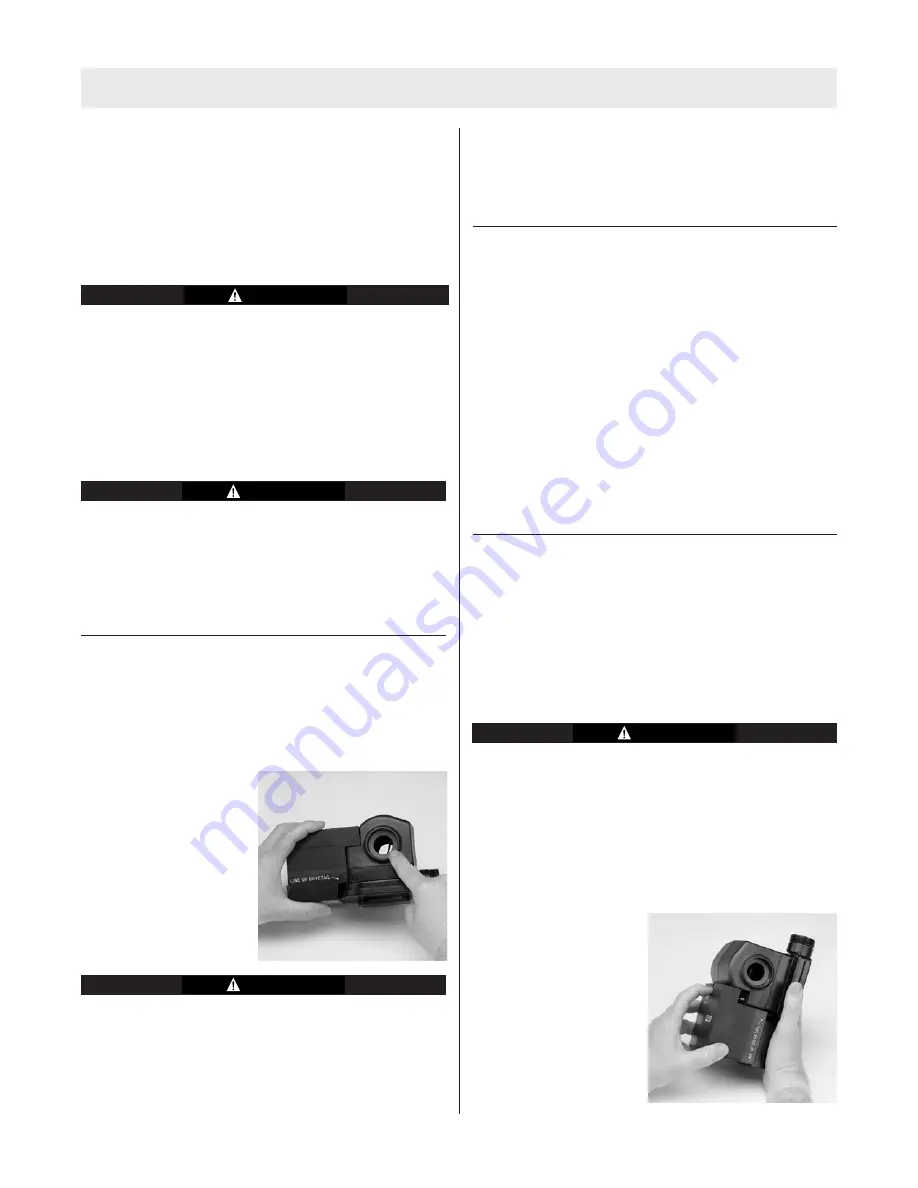
UNPACKING AND INSPECTION
UNPACKING AND INSPECTION
The PAPR consists of the following components:
• facepiece or hood
• motor-blower and battery pack as a single assembly
• breathing tube
• polyurethane-coated support belt
• charger (for NiCad Battery
only
.)
Thoroughly inspect all components of the respirator
before the device is used. Read and observe all NIOSH
approval limitations as they apply to using the PAPR.
1. Remove the facepiece (or hood), breathing tube, bat-
tery charger, and support belt from the box. Check for
signs of shipping damage.
2. Remove the motor-blower and battery pack, and the
two filters if included. Check for shipping damage.
DO NOT drop the PAPR. The case can be damaged by
impact. The blower can be loosened or the motor
shaft can be bent. If the unit is dropped, check the
case for cracks. Listen closely to the sound of the
motor. If the blower sticks or rattles, or if air output is
reduced, the entire motor-blower must be returned to
MSA or an authorized MSA Service Center for repair.
REMOVING AND INSTALLING PARTICULATE,
COMBINATION CARTRIDGES, AND CS/CN
CANISTERS
1. Before charging the NiCad Battery Pack, unthread and
remove the cartridges. Then separate the pack from
the motor-blower.
2. Look to see that the
gaskets located in each
cartridge receptacle on
the motor-blower are in
place.
DO NOT install the filter, chemical cartridges, CS/CN
canisters, or use the respirator if the gaskets are
missing or appear damaged. If you do, the contami-
nant can be drawn into the respirator and inhaled,
resulting in serious respiratory injury or death.
3. Hold the PAPR in one hand.
4. Use your other hand to turn the cartridge/canister
clockwise and thread it down onto the sealing gasket.
Hand-tighten the cartridge/canister.
5. Repeat steps 2 through 4 to install the other car-
tridge/canister.
REPLACING THE CS/CN CANISTER
Use the canister immediately upon opening the bag.
Discard canister after each use. Do not exceed maximum
concentration and service life specified by governing pro-
tocol. The length of time the chemicals in the canister will
give protection depends on the concentration of the cont-
aminant(s) and the rate of breathing. When the mask is
adjusted properly, the wearer should not taste or smell the
contaminant or experience eye, nose, or throat irritation.
The wearer’s inhalation resistance should be as experi-
enced during training.
Return to fresh air immediately and attach a new canister if
you taste or smell the contaminant, experience eye, nose,
or throat irritation, or excessive inhalation resistance. Do
not use the canister after the expiration date on the label.
NICKEL CADMIUM BATTERY PACKS
Battery Changing
The battery pack must be fully-charged for 16 hours (8
hours with a dual-rate charger) before the respirator is first
used. Use the standard charger (P/N 463471), dual rate
charger (P/N 486614), or other recommended charger from
MSA only. Other chargers may damage the battery due to
internal wiring differences or incorrect charging rates.
DO NOT recharge a Lithium Battery. The Lithium
Battery can explode. Failure to follow this warning can
result in serious personal injury or death.
Note:
Unthread and remove the filters, then separate the
pack from the motor-blower.
1. Separating the battery pack from the motor-blower.
a. Be sure that the power switch is in the off position.
b. Hold the motor-blower in one hand.
c. Use the index finger
of your other hand to
pull the metal catch
down toward the
MSA logo on the
front of the battery
pack. Pull the battery
pack straight up.
7
TAL 804 (L) Rev. 17 - 490883
WARNING
WARNING
CAUTION
CAUTION
Summary of Contents for OptimAir 6A
Page 12: ...NOTES 12 TAL 804 L Rev 17 490883...
Page 18: ...NOTES 18 TAL 804 L Rev 17 490883...
Page 20: ...NOTES 20 TAL 804 L Rev 17 490883...
Page 30: ...OPTIMAIR 6A PAPR WITH COMFO ELITE FACEPIECE 30 TAL 804 L Rev 17 490883...
Page 37: ...20 37 TAL 804 L Rev 17 490883...
Page 38: ...NOTES 38 TAL 804 L Rev 17 490883...

































